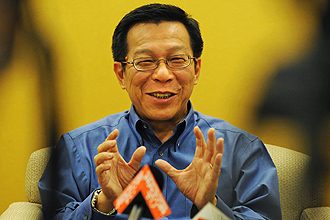http://link.brightcove.com/services/player/bcpid4221754001?bctid=53369118001
<object id="flashObj" classid="clsid<img src=" images="" smilies="" biggrin.gif="" alt="" title="Big Grin" smilieid="3" class="inlineimg" border="0" height="412" width="486">27CDB6E-AE6D-11cf-96B8-444553540000" codebase="http://download.macromedia.com/pub/shockwave/cabs/flash/swflash.cab#version=9,0,47,0">
<embed src="http://c.brightcove.com/services/viewer/federated_f9/4221754001?isVid=1&publisherID=4221424001" bgcolor="#FFFFFF" flashvars="videoId=53369118001&playerID=4221754001&domain=embed&" base="http://admin.brightcove.com" name="flashObj" seamlesstabbing="false" type="application/x-shockwave-flash" allowfullscreen="true" swliveconnect="true" allowscriptaccess="always" pluginspage="http://www.macromedia.com/shockwave/download/index.cgi?P1_Prod_Version=ShockwaveFlash" height="412" width="486"></object>http://c.brightcove.com/services/viewer/federated_f9/4221754001?isVid=1&publisherID=4221424001
http://www.cnngo.com/singapore/play/my-singapore-mr-lee-barber-alley-199234
My Singapore: Mr. Lee, the barber in the alley
Behind shophouses selling designer furniture and Italian cuisine lies a maroon leather chair, a cracked mirror and a marble-finished cabinet. At this back alley of Tanjong Pagar, a sturdy green canvas tied to water pipes and air-conditioning grills shield the trio from the afternoon sun and the gaze of the financial district’s skyscrapers.
The made-in-Japan chair sits along the alley’s double-yellow line, a traffic marker that prohibits parking. But street barber Lee Yoon Tong insists the relic from his former salon is not going anywhere else.

Rain or shine, barber Lee has operated in the same spot for the past seven-odd years so as not to disappoint his regulars.
"I want to serve my old customers," he says in Mandarin while sweeping up locks of hair strewn along the lane. "They still look for me, so I don’t want them to run around looking."
Seven years have passed since the bespectacled 70-year-old moved his salon here. He was evicted from a shophouse around the corner when its rent shot up after redevelopment. Today, a firm selling overseas holiday homes occupies his previous unit while Lee continues to ply his trade in the alley.
Out here, he uses a battery-operated shaver instead of an electric one. In place of running tap water, he fills bottles at the neighboring coffeeshop daily. While his revenue has fallen -- he earns over $700 a month as compared to $1,300 previously -- his costs have dropped even more. With no rent, no taxes and no utility charges, this way of making a livelihood is less stressful, he says.
Running a business on the streets was a way of life in early Singapore. Back then, a pushcart was all one needed to hawk food or services. Today, only state-licensed ones like Lee can do so. The National Environment Agency (NEA), which oversees licensing, says only one in five applicants was successful last year. To be eligible, one has to be a Singaporean above the age of 45 and struggling financially. The NEA then proceeds to negotiate with the applicant’s town council and respective landowners to determine what he can sell, and where. Apart from the monthly license fee of $12, street hawking is rent-free.
Before Mr Lee was evicted in 2002, he operated in the same shophouse for 14 years and last paid a monthly rent of S$475. Since then, succeeding tenants never stayed longer than a few years.
The latest occupant, a firm that sells luxurious holiday homes, is now looking to rent out a portion of their office space. Their asking price? S$7,000.
<object id="flashObj" classid="clsid<img src=" images="" smilies="" biggrin.gif="" alt="" title="Big Grin" smilieid="3" class="inlineimg" border="0" height="412" width="486">27CDB6E-AE6D-11cf-96B8-444553540000" codebase="http://download.macromedia.com/pub/shockwave/cabs/flash/swflash.cab#version=9,0,47,0">
<embed src="http://c.brightcove.com/services/viewer/federated_f9/4221754001?isVid=1&publisherID=4221424001" bgcolor="#FFFFFF" flashvars="videoId=53369118001&playerID=4221754001&domain=embed&" base="http://admin.brightcove.com" name="flashObj" seamlesstabbing="false" type="application/x-shockwave-flash" allowfullscreen="true" swliveconnect="true" allowscriptaccess="always" pluginspage="http://www.macromedia.com/shockwave/download/index.cgi?P1_Prod_Version=ShockwaveFlash" height="412" width="486"></object>http://c.brightcove.com/services/viewer/federated_f9/4221754001?isVid=1&publisherID=4221424001
http://www.cnngo.com/singapore/play/my-singapore-mr-lee-barber-alley-199234
My Singapore: Mr. Lee, the barber in the alley
Behind shophouses selling designer furniture and Italian cuisine lies a maroon leather chair, a cracked mirror and a marble-finished cabinet. At this back alley of Tanjong Pagar, a sturdy green canvas tied to water pipes and air-conditioning grills shield the trio from the afternoon sun and the gaze of the financial district’s skyscrapers.
The made-in-Japan chair sits along the alley’s double-yellow line, a traffic marker that prohibits parking. But street barber Lee Yoon Tong insists the relic from his former salon is not going anywhere else.

Rain or shine, barber Lee has operated in the same spot for the past seven-odd years so as not to disappoint his regulars.
"I want to serve my old customers," he says in Mandarin while sweeping up locks of hair strewn along the lane. "They still look for me, so I don’t want them to run around looking."
Seven years have passed since the bespectacled 70-year-old moved his salon here. He was evicted from a shophouse around the corner when its rent shot up after redevelopment. Today, a firm selling overseas holiday homes occupies his previous unit while Lee continues to ply his trade in the alley.
Out here, he uses a battery-operated shaver instead of an electric one. In place of running tap water, he fills bottles at the neighboring coffeeshop daily. While his revenue has fallen -- he earns over $700 a month as compared to $1,300 previously -- his costs have dropped even more. With no rent, no taxes and no utility charges, this way of making a livelihood is less stressful, he says.
Running a business on the streets was a way of life in early Singapore. Back then, a pushcart was all one needed to hawk food or services. Today, only state-licensed ones like Lee can do so. The National Environment Agency (NEA), which oversees licensing, says only one in five applicants was successful last year. To be eligible, one has to be a Singaporean above the age of 45 and struggling financially. The NEA then proceeds to negotiate with the applicant’s town council and respective landowners to determine what he can sell, and where. Apart from the monthly license fee of $12, street hawking is rent-free.
Before Mr Lee was evicted in 2002, he operated in the same shophouse for 14 years and last paid a monthly rent of S$475. Since then, succeeding tenants never stayed longer than a few years.
The latest occupant, a firm that sells luxurious holiday homes, is now looking to rent out a portion of their office space. Their asking price? S$7,000.






